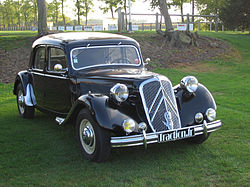This article may lack focus or may be about more than one topic. In particular, the article content appears to be about organised crime in France, but the Milieu is only a subset of that. See Talk.(December 2022) |
Organized crime in France is primarily based in major cities like Marseille, Grenoble, Paris, and Lyon. It is often referred to as grand banditisme in France. [1] [2] or milieu.
Contents
- Terms used
- Organization
- Activities and strategies
- History
- Origins: 1910s to 1920s
- "French Connection": 1930s to 1970s
- "The Godfathers": 1980s
- Push to extortion: 1990–2000
- Revitalization: 2000–present
- List of French mobs
- List of crime families
- In popular culture
- See also
- References
- Notes
- Citations
- External links
From the 1900s to the late 1930s, le milieu primarily engaged in prostitution, bookmaking, fencing, and hijacking. Favored criminal activity in France turned to bank robbery, drug trafficking, and smuggling from 1940 to the late 1970s. The 1980s saw a resurgence of large-scale bank robberies and heists. From 1990 to 2000, criminal organizations established complex extortion rings in Marseille extending to Aix-en-Provence and the greater French Riviera. Since 2002, Le Milieu is known for, in addition to its extortion rings, large counterfeiting and white-collar crime operations. Due to increased financial regulation, Le Milieu has collectively pushed to integrate their crime profits into the legal economy.
France's geographical location makes it an attractive venue for trafficking (i.e. smuggling) and counterfeiting. The port of Marseille is a hub for Le Milieu to move large amounts of product into domestic and European markets. [3] Low economic development continues to be the largest factor in youth joining French criminal organizations.
The most prominent criminal organization within Le Milieu is the Corsican mafia (milieu corse). Although the mafia has encompassed many criminal groups from the 1960s to the 1980s, modern (1990s–present) criminal activity is managed by the Marseille-based Unione Corse and Northern Corsica–based Gang de la Brise de Mer (i.e. "the sea breeze gang"). In 2007, an internal conflict led to the deaths of 102 people on the island of Corsica fracturing the influence of the two larger groups in the island (Brise de mer gang and Colonna family). [4] These two mobs remain powerful as of 2024, often controlling nightclubs, bars, restaurants, apartments, and hotels in Aix-en-Provence, Marseille and the French Riviera. In 2016, it was estimated that France's organized crime net US$23 billion in its underground economy. [5]




